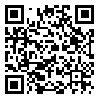Volume 14, Issue 2 (2014)
QJER 2014, 14(2): 179-203 |
Back to browse issues page
Download citation:
BibTeX | RIS | EndNote | Medlars | ProCite | Reference Manager | RefWorks
Send citation to:



BibTeX | RIS | EndNote | Medlars | ProCite | Reference Manager | RefWorks
Send citation to:
Ansari V, Salami H. Allocating Income from Targeting Subsidy to the Production Sectors: Distributional Impacts of Different Alternatives for the Iranian Households. QJER 2014; 14 (2) :179-203
URL: http://ecor.modares.ac.ir/article-18-9947-en.html
URL: http://ecor.modares.ac.ir/article-18-9947-en.html
1- Assistant Professor, University of Tehran, (E-mail: vansari@ut.ac.ir )
2- Professor, University of Tehran, (E-mail: hsalami@ut.ac.ir)
2- Professor, University of Tehran, (E-mail: hsalami@ut.ac.ir)
Abstract: (7396 Views)
This study investigates alternative options for allocating incomes from targeting subsidy program to different production sectors and its consequences on income distribution among Iranian households. This research is performed by computing income multipliers derived from social accounting matrix for three income groups in urban as well as rural households and allocating income to different production sectors accordingly. Results indicate that allocating income based on income multiplier of the rural high income households leads to a reduction in income inequality between rural and urban households and generates the highest absolute income for all income groups. The only drawback of this option is that it raises the income gap among different income groups in rural as well as urban regions to some extent. In addition, results reveals that in order to reach the objective of reducing income inequality, the two agricultural subsectors, cropping and horticulture production sectors, and food industries can play important role and should be given special attention in allocating income to these sectors.
Keywords: Targeting subsidy program, Income multiplier, SAM, Iran
JEL Classification: E64, H23, D31, D58
Received: 2012/03/3 | Accepted: 2012/12/22 | Published: 2014/05/22
| Rights and permissions | |
 |
This work is licensed under a Creative Commons Attribution-NonCommercial 4.0 International License. |







